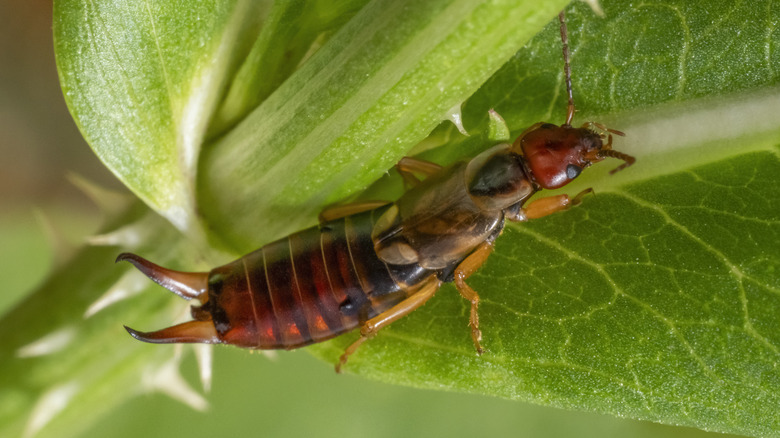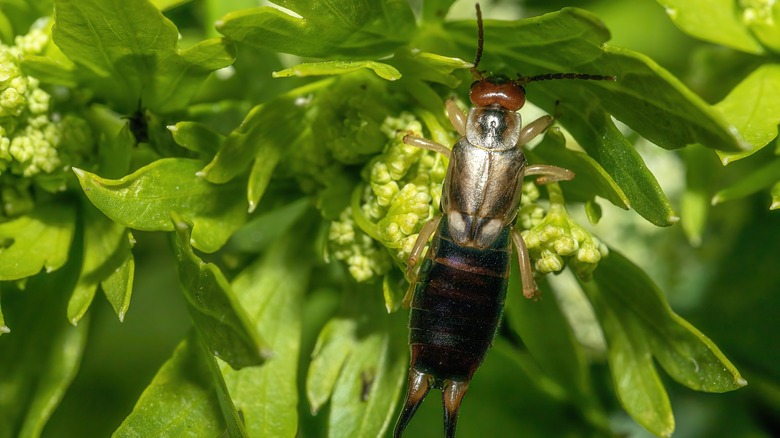Get Rid Of Pesky Earwigs In Your Lawn With A Simple Diy Cardboard Trap
While myths and urban legends have long claimed that earwigs can burrow into your head through your ears, the real danger of these little insects isn't to you, but to your crops. Earwigs are actually harmless to humans, but can chew holes through leaves and fruits, destroy corn silks, and ruin flower buds. On the other hand, they also eat aphids, caterpillars, and scales, so you really should think twice about killing earwigs, especially if they aren't causing significant damage to your garden. If they are causing a problem, one of the best and simplest ways to keep the earwig population in your lawn under control is by creating a simple trap for the little pests out of a rolled up piece of corrugated cardboard.
While the idea that something as simple as a tube of cardboard controlling earwigs may sound improbable, it works because during the day these little insects seek shelter in dark protected spaces. The cardboard roll provides this perfectly. As long as you dispose of your traps and the earwigs within them every few days, this method should work perfectly for preventing an earwig population boom in your garden.
Constructing a cardboard earwig trap
While any kind of cardboard can be used to make an earwig trap, corrugated cardboard is the best option, thanks to its ridged design. Cut a piece of the cardboard, about half a foot wide, and roll it into a tube with the ridges of cardboard facing towards the center of the roll. Then, use string or tape to secure the tube closed. Once the trap has been constructed, you can tie it to a tree or place it in a protected space in your garden. After a few days the trap should be filled with earwigs to dispose of.
To make your traps even more effective, you can bait them using bacon grease, fish oil, or wheat bran. Dampening the cardboard first can also help make it even more appealing to earwigs. Once you've caught a tube full of earwigs, don't forget to dispose of them properly so they won't just escape back to your lawn. You can either empty the cardboard tube into a bucket of soapy water or seal the earwigs in a bag and throw them away.
Additional ways to deal with earwigs
Another popular DIY earwig trap involves using an empty plastic container, like the kind sour cream comes in. Wash out both the container and its lid, then pour a small amount of soy sauce, grease, or fish oil in the bottom of the container. Cut a small hole in the container's lid for earwigs to enter through and bury the trap in the garden with the lid roughly level with the top of the soil. Be sure to empty and rebait the trap several times per week.
Earwig control isn't only about traps though– making sure your garden isn't set up as an earwig paradise is also important. Don't leave piles of debris, leaves, or damp cardboard for earwigs to nest in, and be sure to use mulch and drip irrigation to ensure your yard isn't unnecessarily damp. Making sure your yard isn't too inviting can also help keep earwigs out of your house. While insecticides are occasionally used against earwigs as a last resort, the potential risk to pollinators and other native insects generally outweighs the benefits. If you must use an insecticide to handle an earwig infestation, be sure to follow the instructions carefully and apply it in the evening as earwigs, unlike most pollinators, are active at night.

